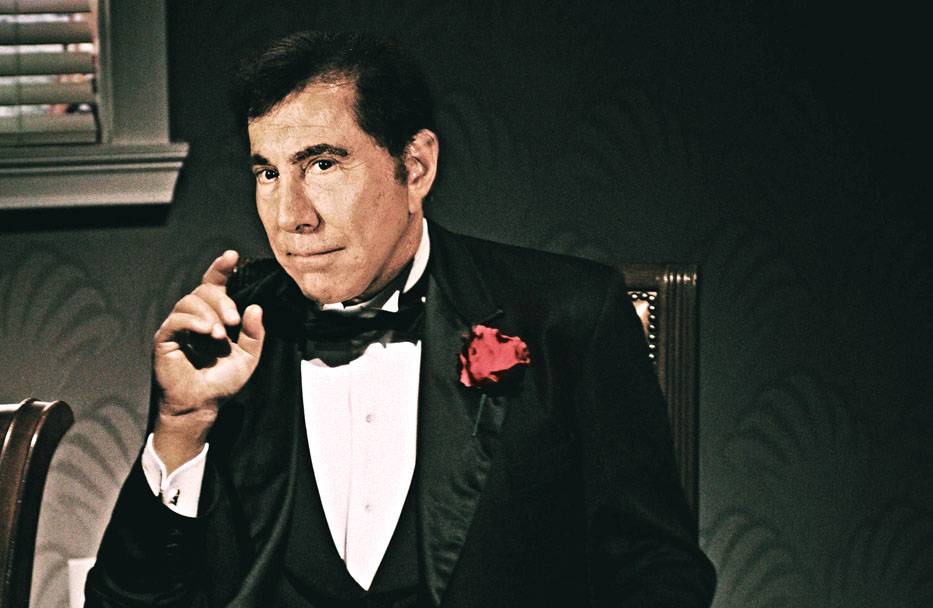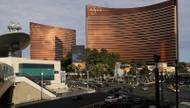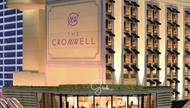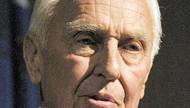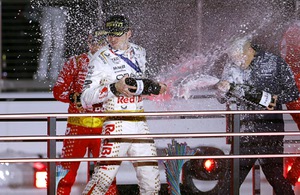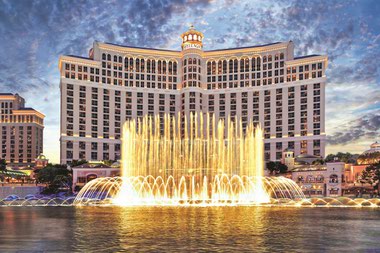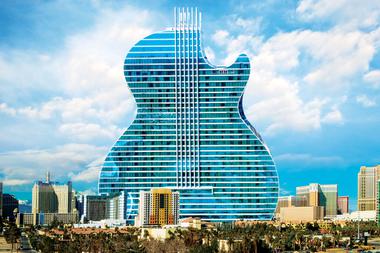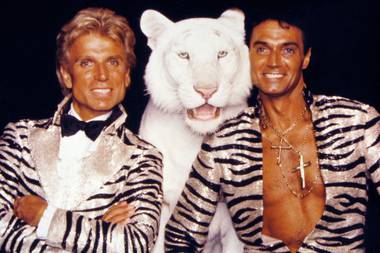It’s hard to imagine a 30-year-old Steve Wynn, new to Las Vegas, hustling and eager to find his place to bloom in the desert. But give it a try.
There are many Vegas casinos that never were, but arguably the most pivotal nonexistent project was the Godfather. It was to be built, maybe, on a little parcel between Caesars Palace and Flamingo Road at the intersection of Las Vegas Boulevard. But instead of the Godfather, Vegas got the Steve Wynn it knows so well today.
The story is spelled out in Quiet Kingmaker by Jack Sheehan, a history of building Las Vegas as told by E. Parry Thomas. In the 1960s, Thomas and his Bank of Las Vegas engineered the many land and casino purchases by Howard Hughes, including this Caesars sliver, bought from Western Transportation owner Jake Gottlieb.
When Wynn, who came to town in 1967, became interested in this plot of land, he had already been in and out of involvement with the Frontier casino and was helping to build the liquor distribution company that would eventually become Southern Wine & Spirits. So Wynn asks Hughes’ real estate guy, Herb Nall, about the spot and Nall calls it “a lousy piece of real estate.” Wynn gets more interested, especially when he learns Hughes wants to use profits from the potential sale to buy a more desirable plot near the Landmark.
Then, Kirk Kerkorian announces his plans to build the original MGM Grand (now Bally’s) across the street. Wynn figures the price of this piece will skyrocket, but it doesn’t ... yet. Nall tells Wynn he wants $1.1 million and he wants the sale to be kept a secret, since Hughes doesn’t want anyone thinking he’s selling off property and ditching Vegas.
“I remember putting the phone down and, like Steve McQueen in The Thomas Crown Affair, I danced around on my bare feet on the travertine floor, because I knew on the spot that I had just made my first big deal,” Wynn says in the book. “That purchase ... still ranks as the most thrilling business deal of my life.”
Why? Because it gave a young Wynn the incredible option of building his own casino on what would become the Las Vegas Strip, or selling the property for big profit. So he draws up plans for a small casino and hotel called the Godfather, and everybody sees those plans, including the guys at Caesars Palace.
Perhaps the plans were just a decoy to motivate Caesars to buy the land—they didn’t need another new competitor operating so close. But Thomas says, “If Caesars didn’t buy it from him, he was going to go ahead with building a place ... and he would have done damn well with it.”
Caesars purchased the land for approximately $2.2 million in 1971. Wynn made a million bucks on the turnaround. He took the money and bought a huge chunk of stock in the Golden Nugget, which was just a casino back then. It didn’t have a hotel, but it did have a lot of land for future expansion. He took control and turned it into the Golden Nugget we all recognize today as the jewel of Downtown Vegas.
We know Wynn as a risk-taker, a trailblazer, but the Godfather move looks conservative with four decades of hindsight. He spent years learning how to operate casinos before taking another shot at building on the Strip ... and the Mirage certainly isn’t stuck on a tiny shred of the Boulevard. No one could have predicted that Steve Wynn would become this Steve Wynn.
Look at the Strip today—the Tropicana and the Cosmopolitan and even the Hooters Casino have new owners. At least two new ground-up resorts are in the works, both from new-to-Vegas developers. That big, blue building that was supposed to be Fontainebleau is just waiting for a hustling, eager somebody to dive in. Moves are being made, behind the scenes and before our eyes. How will they pan out?
